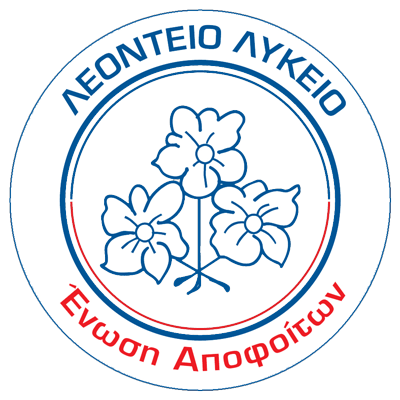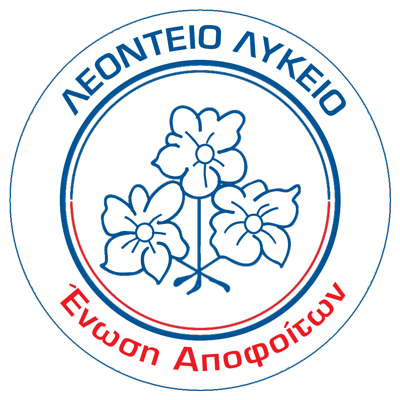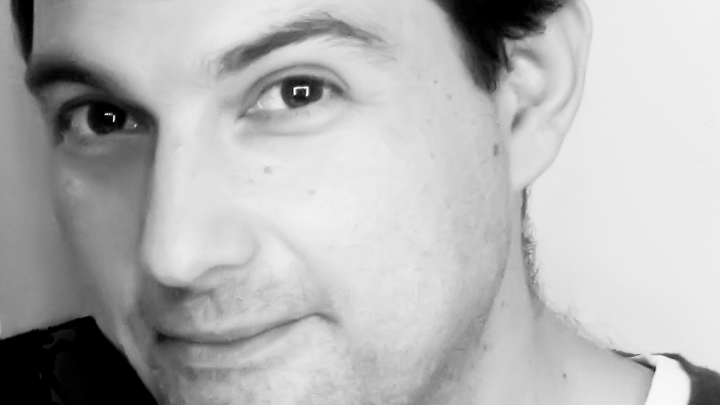Born and raised in Greece, mathematician and researcher Yiannis Vlassopoulos holds a PhD in Mathematics from Duke University. He has been a visiting fellow and professor in institutions such as the Erwin Schrodinger International Institute for Mathematical Physics in Austria, the Institute des Hautes Etudes Scientifiques in France, and the Max Planck Institut fur Mathematik in Germany. Vlassopoulos’ main areas of interest and study are Moduli spaces of Riemann surfaces, Formal non-commutative geometry, Gromov-Written theory, Loop spaces, Mirror symmetry, and topological String theory. His work extends beyond mathematics to physics and art.
Vlassopoulos discusses with us the journey that drew him to his field, the fundamentals of his research, and some compelling artistic side projects that he fuses with his mathematical perspective.
I ENJOYED THE SENSE OF MYSTERY THAT THERE WAS SOME SECRET DEEP KNOWLEDGE LURKING IN THE BACKGROUND, THE SENSE OF SYMMETRY THAT THINGS FIT TOGETHER PERFECTLY IF YOU LOOK AT THEM FROM THE RIGHT POINT OF VIEW. THIS STRUCTURE HOLDING THINGS TOGETHER ACTUALLY LOOKED BEAUTIFUL.
Q What first inspired your love and interest in mathematics?
A I remember enjoying mathematics already from the last year of primary school. Then later in high school I started reading from some of my father’s math books which he had as he is an engineer.
I guess I enjoyed the sense of mystery that there was some secret deep knowledge lurking in the background, and also the sense of symmetry that things fit together perfectly if you look at them from the right point of view. I suppose I also enjoyed the fact that this structure holding things together actually looked beautiful.
Q How was your experience studying math in Greece as a child? Were you adequately challenged and nurtured in the educational system here?
A Having a good teacher is very important. My math teacher at the last year of high school was very inspiring and gave me a glimpse of more stuff than in the official curriculum. In my case I also learned a lot from my father while in high school as he enjoyed classical geometry and algebra and we were sort of competing trying to solve exercises from some of his books. Then in the University in Athens I also had some good teachers but I didn’t meet any people to advise me on my domain of preference which was geometry.
EVEN THOUGH THERE IS CURRENTLY NO EXPERIMENTAL EVIDENCE FOR STRING THEORY IT TURNS OUT THAT MATHEMATICALLY IT IS A VERY INTERESTING, DEEP, AND FERTILE AREA.
Q Could you describe the rudimentary basics of topological string theory?
A The language of physics is mathematics and the interaction of the two has always been very fruitful for both.
String theory is a proposal in theoretical physics for the unification of the four forces of nature: electromagnetism (used in cell phones, radios etc.), strong and weak nuclear forces (responsible for the stability of the nucleus of atoms and for radioactivity respectively) and gravity (which causes us to have weight and the planets to orbit the sun). The first three are already unified in a model, a mathematical structure, called quantum chromodynamics. This has been experimentally verified to an enormous precision and is used in all kinds of applications. The further unification with gravity is one of the big problems of physics.
Now, Einstein’s theory of gravity (which is called general relativity and has also been experimentally verified) is a classical as opposed to a quantum theory. An example of classical physics is Newton’s theory which predicts a unique path for a ball one throws with a certain force at a certain angle.
On the other hand, in quantum theory all possible paths between a starting and ending state are considered relevant and assigned a certain “weight”. The only calculation that one can then make is an average over all paths and the answer is a probability of landing at a certain state.
String theory is a quantum theory but one in which particles are considered to be, well, strings and not points. If a closed string (a loop) moves, it describes a cylinder. The process of two strings moving and at some point colliding and fusing into one is described by a pair of pants (starting from the feet and ending at the waste). Every path of interaction of strings then corresponds to a surface of a certain shape.
The question now is to assign some sort of weight to every such surface and somehow average over all surfaces. This is the basic problem one tries to solve.
The “topological” part means that the weight assigned to surfaces depends only on the topology of the space parameterizing all surfaces. Topology is the part of mathematics where two things are identified if we can deform one to the other without reaping it up (so for example a cup is considered the same as a doughnut from a topological point of view since if the cup is made out of play dough it can be deformed, without reaping, to its handle).
Even though there is currently no experimental evidence for string theory it turns out that mathematically it is a very interesting, deep, and fertile area. Conjectures made by physicists some 30 years ago took mathematicians by surprise and have led to great advancements in areas of mathematics that were previously unknown to have anything to do with physics.
I WAS ALWAYS INTERESTED IN PHYSICS SO I WANTED TO WORK IN AN AREA OF MATHEMATICS THAT IS RELATED TO IT AND THAT BROUGHT ME TO THE MATHEMATICS OF STRING THEORY.
Q Please describe the path that led you to focus on this specific subject.
A I was always interested in physics so I wanted to work in an area of mathematics that is related to it and that brought me to the mathematics of string theory. At the same time I always liked geometry. Moreover, when I was starting graduate school there was a lot of excitement in the air about these new fantastic conjectures (called “mirror symmetry”), on geometry, coming from string theory. It didn’t take much for me to get hooked.
Eventually of course one finds out that geometry and algebra are to a great extent equivalent fields, so that led to a more algebraic approach in the subject via so called homological algebra and non-commutative geometry.
Q What would the implications be of your conclusions?
A As I mentioned before this so called “mirror symmetry” conjecture is a far reaching vision connecting two a priori different areas of mathematics, loosely speaking one that has to do with shapes of spaces (“complex geometry”) and another that has to do with size (“symplectic geometry”). The work my collaborator and I are doing is on the common algebraic background that one expects and in many cases has indeed been proven, lurks in the background of both sides of the conjecture. It is a necessary step in setting up the correct framework in which the conjecture can be proven.
As always though when aiming for a destination one may find interesting sidetracks on the way and the same is true for math. So for example we studied in some detail and proved some theorems about the space parameterizing all possible shapes of surfaces. It’s called Riemann’s moduli space and if one fixes the number of holes of a surface to be g (e.g. the doughnut has g=1) then the space has dimension 6g-6. This space has been studied for more than a hundred years and is essential in many parts of mathematics. It is related to a certain kind of graphs which one may think of as the spine of a surface, in the sense that if you remove a few points the surface can be deformed, without tearing up, to the graph.
Eventually we expect that explicit solutions for some differential equations (called integrable systems) will appear, linking perhaps to other more applied areas of mathematics.
From the point of view of string theory, it is a part of the calculation that would eventually lead us to understand what the theory predicts in the energies accessible to us in the lab but I am not really an expert on the physics part so I don’t have a very good understanding of that side of the story.
Q How could your conclusions apply to everyday life?
A Well in so called “pure math” as the ones I work on we don’t really know the applications to everyday life. One is guided by curiosity, a sense of aesthetics, and by the tradition of open problems arising within already known mathematical structures and leading to new ones.
Having said that, history has proven that mathematics considered interesting and beautiful by mathematicians eventually find applications, even though this may take decades. For example the mathematics of the theory of relativity (used every day in GPS technology) was found some 50 years before Einstein used them for his theory. That mathematical theory is called differential geometry and Riemann and other mathematicians that build it, did so without any applications in mind. The same is true for applications of so called algebraic geometry to cryptography (in particular for Blackberry phones) or the mathematics used in MRIs.
After this long “apology” you may imagine my answer about applications of my work to everyday life: I don’t know any! Nevertheless I would very much like it if some were found and actually recently there was a proposal by the mathematician Robert Penner to use Riemann’s moduli space that I mentioned earlier, in order to solve the problem of protein folding in Biology.
Q Although you currently work at the University of Vienna in Austria, you return to the IHES each year for the past 10 years to work. What is it that brings you back to the institute each year?
A The IHES is a research institute for mathematics and physics with only four permanent mathematicians and two physicists of very high level. At any given time about forty others are invited to stay and work in order to collaborate. It is similar in structure to the Institute for Advanced study in Princeton although with a smaller number of visitors. My main collaborator, Maxim Kontsevich is a permanent professor at IHES and we have a long term ongoing project. Working on that is the main reason I visit IHES.
Q What role did you play in the unique photographic book: The Unravelers: Mathematical Snapshots?
A That book was made on the occasion of the 50th anniversary of IHES. It is a combination of pictures of and texts by mathematicians and physicists at the institute. I contributed a text about how I view mathematics entitled “thought technology: the pursuit of structure.”
As I described previously, I view mathematics as an interlocking web of structures. Such a structure can usually be encoded as an operation between objects, namely a procedure such that given two or more objects we can construct new ones. Addition of numbers is an obvious example but there are all kinds of different objects with which we can define operations. For example earlier on we saw that interactions in string theory correspond to surfaces with incoming and outgoing boundary circles such as a pair of pants (two incoming strings and one outgoing).
Now, given two surfaces such that the number of outgoing boundary circle of the first is equal to the number of incoming boundary circles of the second, we can just glue them along these circles and get a new surface. Think for example of sewing two pairs of pants along their wastes to get a new “overalls” type of garment. This operation encodes a mathematical structure present in string theory.
Q Inspired by Aemilia Papaphillipou’s installation piece “Liquid Sky”, you wrote a fascinating article about the connection between mathematics and art. You assert that “though models made by art have the immediacy of the senses, they still manage to give new meaning to already known models.” Could you briefly elaborate on this point and explain how this related to mathematics?
A In this article I was trying to compare art and mathematics. In both cases one tries to construct a structure that can potentially be used to model and reflect our experience of reality. I imagine that a work of art e.g. a painting, a film or a song that moves us does so because it illuminates or resonates with some experience we have had even though this process may be at a subconscious level. Moreover the same artwork can illuminate different experiences for different people. On the other hand a mathematical structure can be used to model aspects of our experience of reality, for example a differential equation called the heat equation models the distribution of heat on a rod after warming it at one point. The same equation is in fact also used to model prices of stocks in the market. The difference between art structures and mathematical structures is that in the first case it’s like being the user of a computer operating system, it’s very intuitive and immediate for the senses but we don’t really know how it works. On the other hand in math it’s like working at the level of machine code were everything is very explicit but very removed from the final result perceived by the senses. Now how do we get new models from older ones? We may combine the old ones in a new way, or deform them like Dali’s melting watches say, or view an old one from a new point of view, like Duchamp’s bicycle weal. The same process takes place in mathematics.
Q In your essay “Thought Technology: The Pursuit of Structure,” you state that “mathematicians from all different backgrounds, cultures, and nationalities have absolutely no problem communicating and collaborating when it comes to their work.” You have studied and worked in Greece, France, Austria, and the United States. While you believe collaboration is easy for mathematicians from different cultures, are there nevertheless fundamental differences between the methods of mathematical education and research among these different systems?
A Yes certainly there are differences in the mathematical education system. I am not an expert on that but for example in Russia students which are very good in mathematics are separated from a young age and put to special schools with more emphases on the subject.
As another example, in the University in Greece there is much emphasis on theory but often less in solving exercises and doing calculations. I noticed the opposite in the U.S. Solving exercises is in fact quite essential for understanding.
CONSIDERING AN APPLICATION OF A MATH THEORY TO PHYSICS IS LIKE “PLAYING IT” SO PEOPLE CAN “LISTEN.”
Q Do you recommend any websites or books where our readers could find more information about your field and/or research?
A Brian Greene’s books on string theory for the general public, like for example “The Elegant Universe,” are quite nice.
On the mathematical side unfortunately I’m not sure where a good place to look would be. Explaining math to non-experts is usually easier by considering applications in particular to physics. I always think it’s the same problem that would arise if we couldn’t listen to music but had to read it from the score. It wouldn’t be a problem for musicians but it would be one for the rest of us.
Considering an application of a math theory to physics is like “playing it” so people can “listen.”







